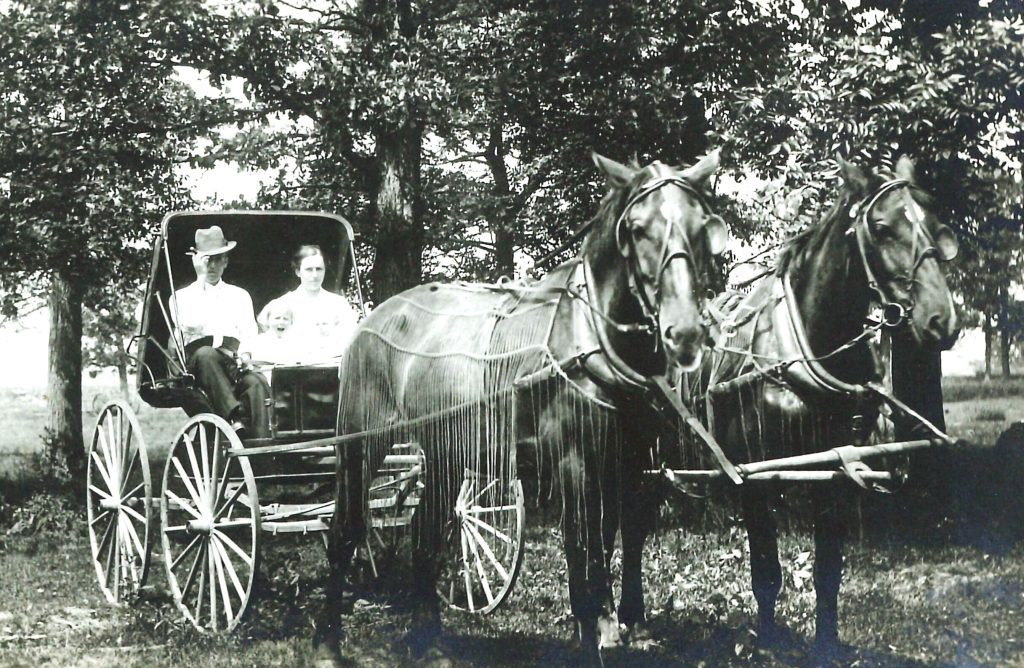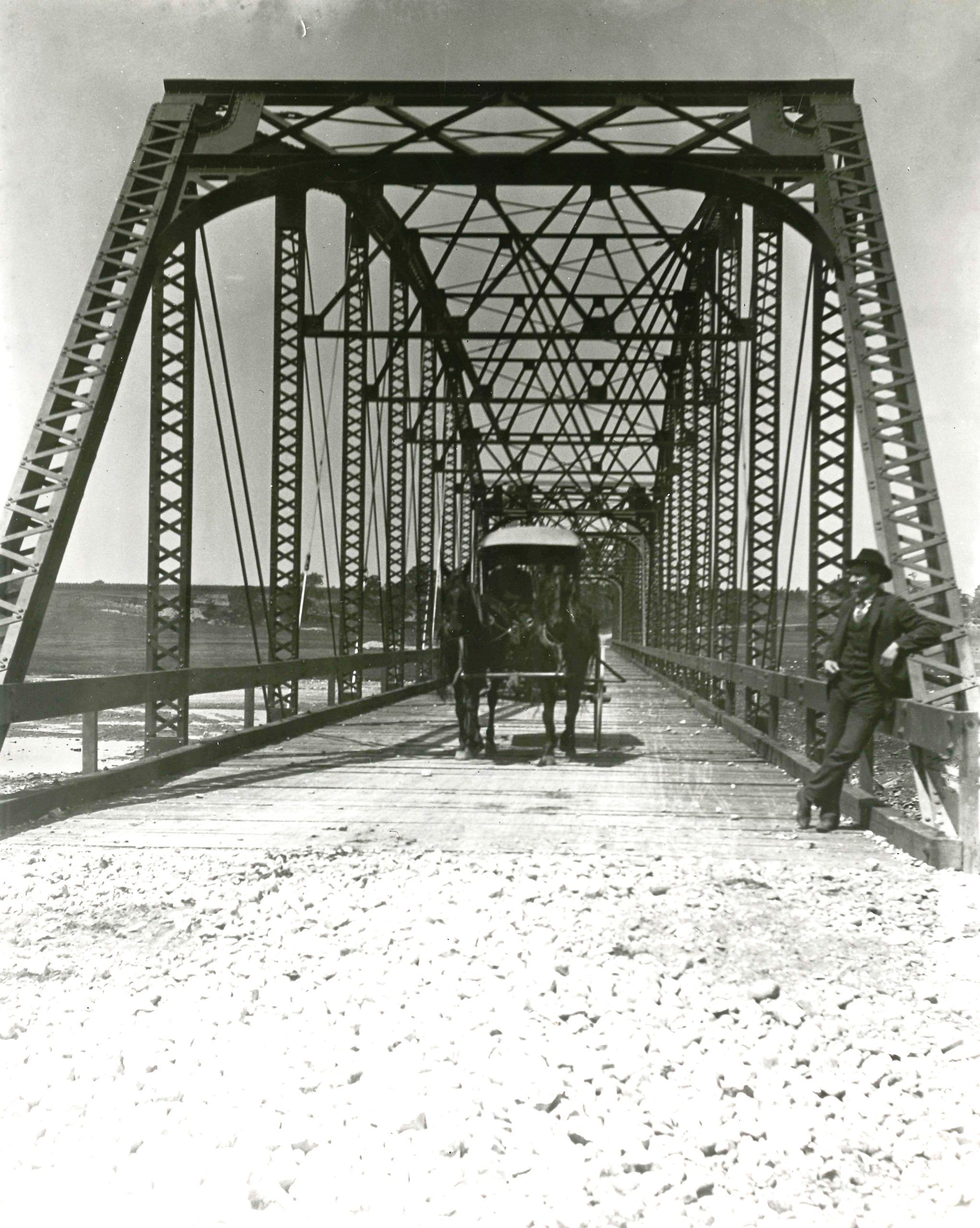The dangers of getting from here to there

By Sandy Vasko
While stuck in traffic the other day, I expressed the wish that I had a horse. They can go where cars can’t, and they don’t run out of fuel. But did I really mean it?
That got me thinking about the 19th century mode of transportation, i.e. the horse and wagon or buggy. Climb aboard, I’ll take the reins and we will see which is better.
First let’s do a comparison between horses and automobiles as means of transportation. With a car, you walk outside, unlock the door, get in, turn the key and instantly, you are ready to move.
With a horse, you must first go to the barn, pull out the horse, get a bridle on him, a bit in his mouth (which can be a messy job), harness him up to the buggy or get a saddle on him, and then get him to hold still long enough for you to get into the buggy, or get into the saddle.
With a car, once you feed it gas, you only have to feed it again if you go somewhere. With a horse, you must not only feed, but water him, even if he hasn’t been used.
With a car, once you park it, unless you have a leak, it does not leave “presents” on the floor for you to pick up.
Cars do not get scared when they hear loud noises or see something move unexpectedly.
The last point brings us to our main story, the very real dangers of using a live animal for transportation. We go down to Wilmington for our examples:
Case in point, we read in the June 25, 1867, Joliet Signal: “Killed – On last Wednesday, Mr. John Crossup, an old resident of the town of Wesley, was killed in Wilmington by his own team, which had broken loose and was running furiously down the street. He jumped before the horses and attempted to catch them by the bridles, but missing his grab, was hit by the wagon tongue and his brains dashed out.”
In this case, there is one similarity to automobiles, that is the rule that says — don’t jump in front of one when it is speeding toward you.
Our next case involves another prominent citizen of Wesley. From the October 16, 1867, Wilmington Independent: “The most mournful casualty is still to be recorded: Mr. John Ritchey, of the town of Wesley, was fatally injured last Wednesday. He was on his road home from Kankakee, accompanied by his wife and child and a Mrs. Howell, and when near the house of Mr. Ferris, his horses became unmanageable and ran away, throwing the occupants out. Mrs. Howell had a rib broken, but strange to say, the child was unharmed. Mrs. Ritchey received no serious injury. Mr. Ritchey himself was thrown some twenty feet and fell very violently. He laid several hours before found, and was taken home in a dying condition. His untimely death will be severely felt by all who knew him.”
However, you can’t keep a good man down. From the October 23, 1867, Wilmington Independent: “In our last issue it was stated that the accident to John Ritchey, Esq., would prove fatal, but we are most happy to learn that he is recovering. Mrs. Ritchey, who was also seriously injured, is improving and will recover.”
Not to be outdone by his neighbor, we read of William Goodwin, Jan. 8, 1868, in the Independent: “Mr. Wm. Goodwin, of the town of Wesley, had a narrow escape from being killed some two weeks ago. While drawing some rails upon which ice and snow had accumulated, his wagon suddenly struck some rough ground, when some of the rails were thrown forward upon the horse, Mr. G. being thrown between the horses in a most dangerous position. By a quick and dexterous movement, he succeeded in throwing himself clear from the horse, and thus escaped with only a strained back.”
There can be no doubt in your mind now that many people welcomed machine-driven transportation. The first time a moving machine is mentioned is on Aug. 7, 1885, in the Wilmington Advocate:
“An unusual sight on Water Street Saturday evening was Cutshaw’s farm engine plodding and snorting along, without the aid of horses, and dragging a wagon. Evidently the age of steam locomotion on common roads is not far distant.”
One of the reasons that some did not embrace machine driven transportation was the fuel. On April 29, 1904, the Wilmington Advocate printed this tongue and cheek bit: “A gallon of gasoline will run an automobile twenty miles in thirty minutes on a level road. That’s nothing. A gallon of the same stuff has been known to run a hired girl forty feet through a kitchen window in a quarter of a second.”
The conflict between the two is shown in the following from Aug., 26, 1904, Wilmington Advocate: “One of our prominent farmers carries under his wagon seat, a yard of red flannel, and on the approach of an automobile he waves to the chauffeur to stop until he passes. So far, the automobile men have respected his signal. If this plan is carried out the farmers say there will be little trouble in meeting such a contrivance on the same road.”
But the plan was not carried out, and we read one month later: “September 9, 1904 – Wilmington Advocate; “An automobile, driven by Dr. Major, of Braidwood, frightened a team of work horses belonging to Thomas Baskerville, of Florence, Monday last, causing them to run away and injure themselves severely.”
So, which would you choose? Auto or Horse?
